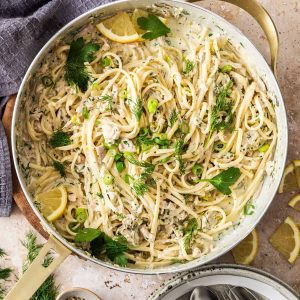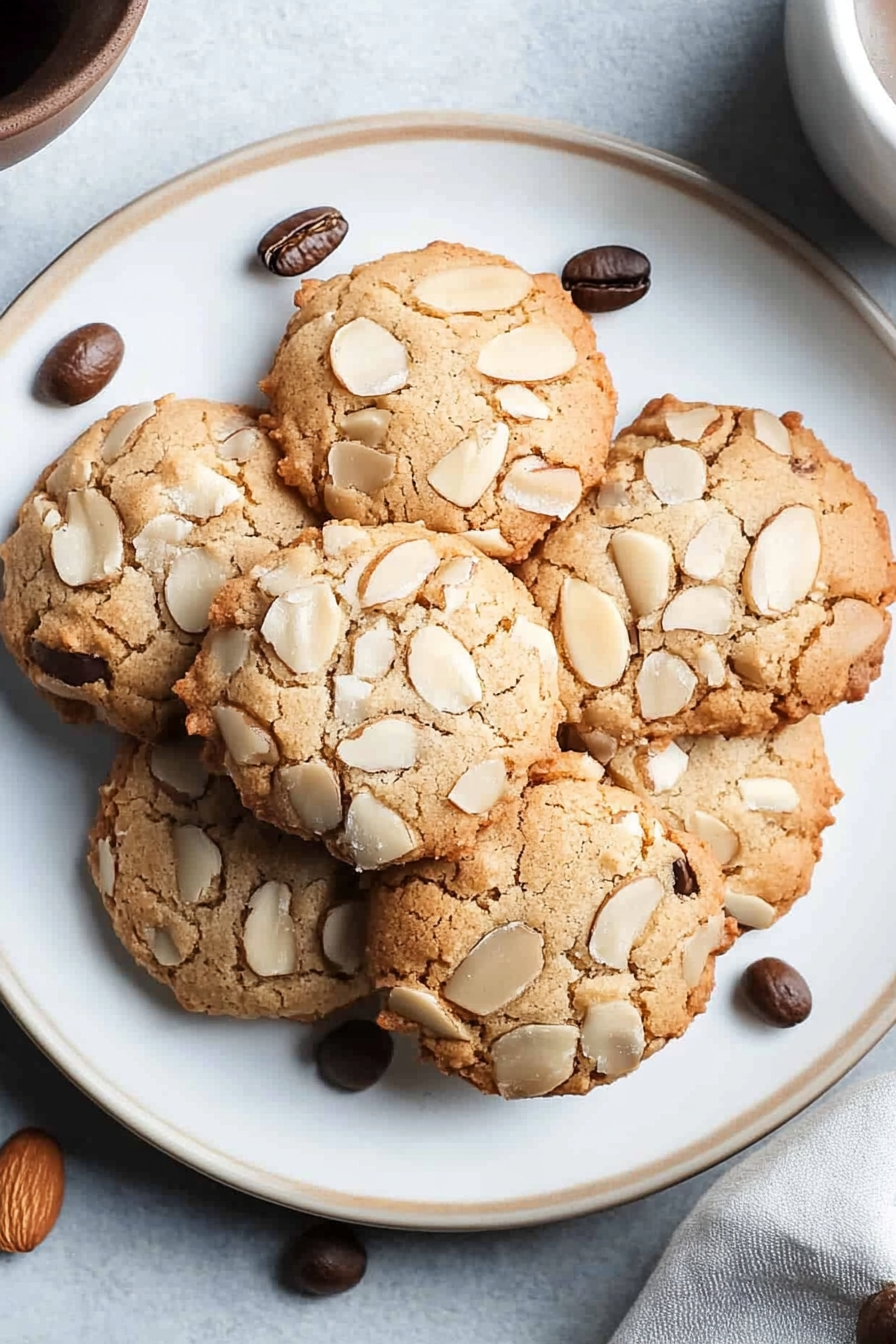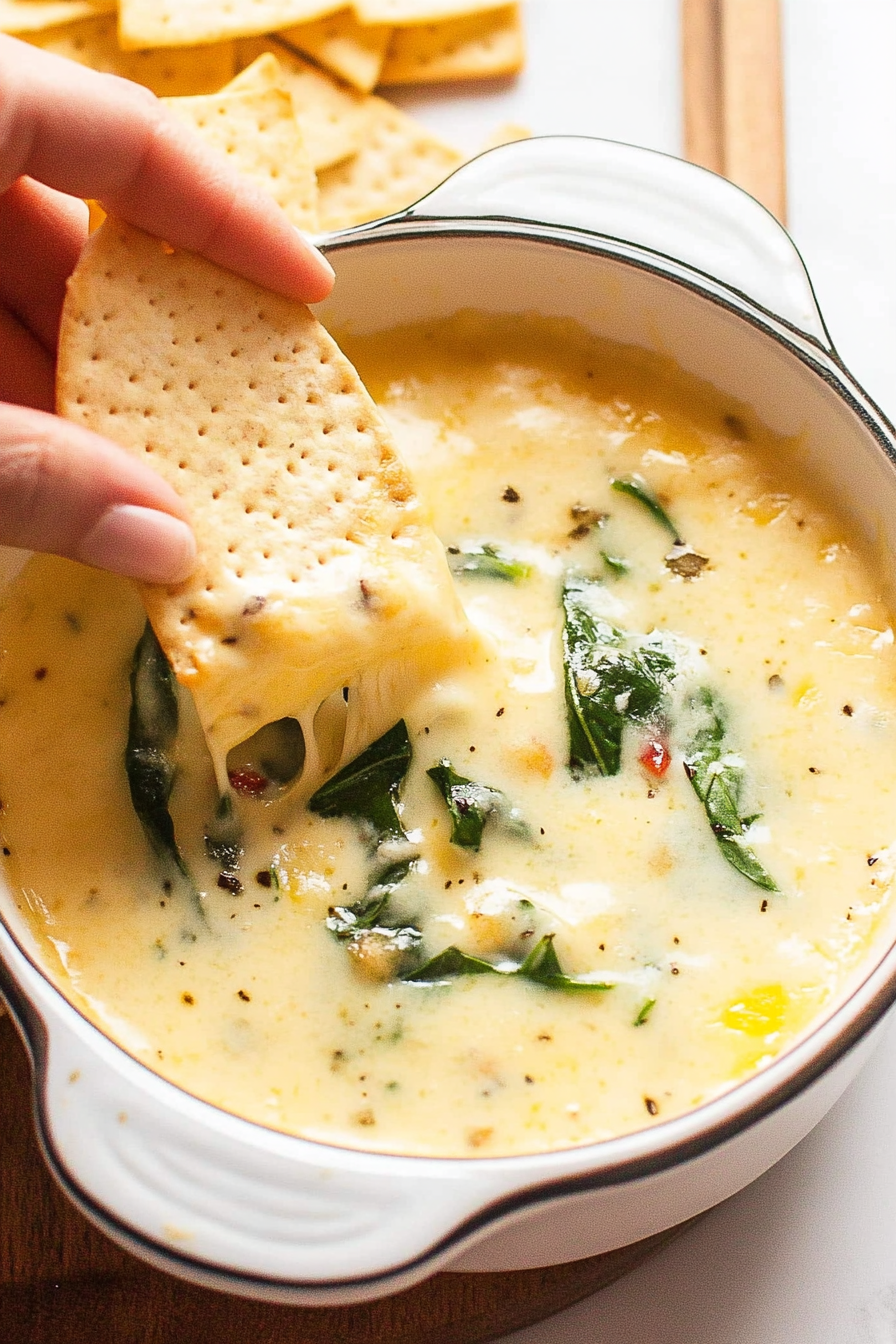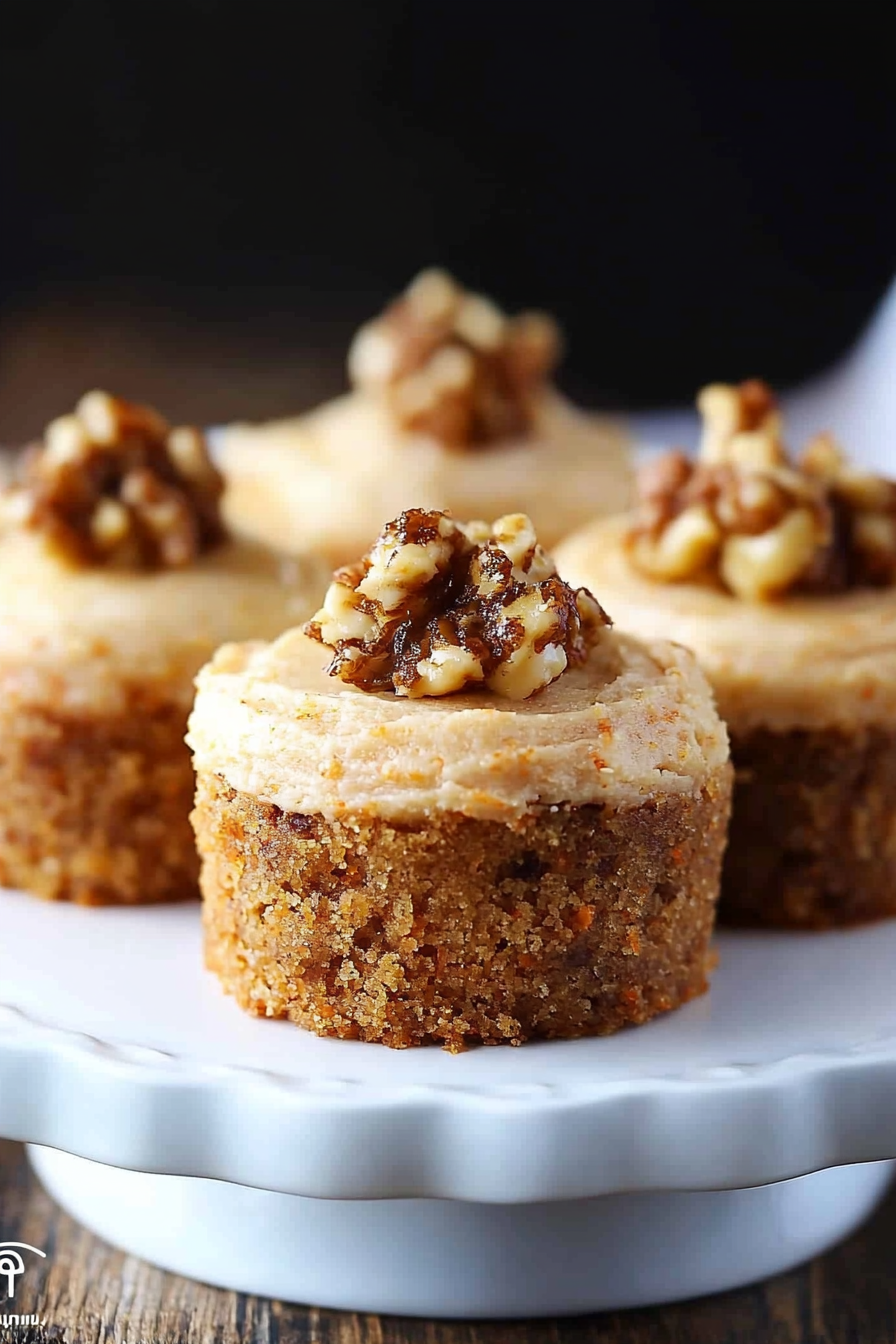I can still smell that creamy garlic-scented steam rising from the pot the first night I truly treated myself to a quick, comforting dinner after a long day. This creamy tuna pasta became my little antidote to chaos: something that tastes like a hug, but comes together in the time it takes to boil pasta. It’s not fussy, it doesn’t need a parade of ingredients, and the flavor somehow feels both nostalgic and up-to-date—like something your grandmother would have made with a modern twist. I always reach for this when I’m spinning plates in the kitchen and my brain is already on to the next task. It’s incredible how a simple pantry staple can become a family favorite, isn’t it? Creamy, bright, a little peppery, and just enough lemon to wake up every bite. Creamy tuna pasta is that friend who shows up on a busy weeknight with a smile and a plan.

What is Creamy Tuna Pasta?
What is Creamy Tuna Pasta?
Think of this dish as a streamlined, indulgent comfort plate that uses everyday pantry stars to build flavor fast. It’s essentially pasta tossed in a luscious cream sauce punctuated by tuna, garlic, lemon, and a handful of bright herbs. The name tells you exactly what you’re getting: creamy, tangy sauce clinging to al dente noodles, with tuna folded in to give it heft and a savory wink. It’s the kind of dish that tastes like you spent ages on it, even though you didn’t. The concept is simple: a silky sauce, a friendly protein, and a finish of parmesan and parsley that makes the whole bowl feel special. My mom called this “backup dinner” in our house—the one we reach for when we want real flavor without a long shopping list. It’s fittingly named because it’s creamy, comforting, and somehow still light enough for a weeknight.
Why you’ll love this recipe?
Why you’ll love this recipe?
What I love most about this creamy tuna pasta is the way it feels indulgent without demanding your entire evening. It’s a lifesaver on busy nights, and it still tastes like you spent an hour refining the sauce. Here’s why it sticks around in my rotation:
- Flavor: The tang of lemon, garlic’s warmth, and the ocean-salty bite of tuna all play nicely with a creamy, cheesy finish. It’s a balanced, comforting flavor that never feels bland or one-note.
- Simplicity: This comes together in under 30 minutes using pantry staples. I’ve made it after work with kids underfoot and a timer in hand—it stays calm and dependable.
- Cost-efficiency: Canned tuna is a budget-friendly protein, and a little goes a long way when you stretch it with pasta and cream. It’s great for feeding a family without breaking the bank.
- Versatility: Swap in different pasta shapes, switch up the greens, or add capers for a briny kick. It’s the kind of recipe that welcomes tweaks and personal touches, so you can make it yours each time.
If you’ve enjoyed a classic Alfredo or a lemon-garlic shrimp pasta, you’ll feel right at home here. It shares that same silky texture and comforting aroma, but the tuna adds a satisfying heft, making it feel substantial enough for dinner yet easy enough for a weeknight. It reminds me of a few other quick dinners I adore—like a speedy saffron pasta or a bright lemony chicken piccata pasta—but this one has a soft, cozy hug that I reach for again and again.
### 4. How to Make Creamy Tuna Pasta
How to Make Creamy Tuna Pasta
Quick Overview
Boil a well-salted pot of water and cook your pasta until just shy of al dente. In a skillet, warm olive oil, garlic, and a touch of red pepper flakes. Stir in the cream and milk to create a silky base, then fold in lemon juice, parmesan, and a splash of the reserved pasta water to emulsify. Flake in the tuna, fold in chopped parsley, and toss with the hot pasta until everything clings together in a glossy, forgiving sauce. A quick finish of extra parmesan and a drizzle of olive oil, plus a hit of pepper, makes it irresistible. If you’re craving a crisp top, you can finish it in a hot oven for a few minutes to lightly bake the edges.
Ingredients
For the Main Sauce:
- 12 oz (340 g) pasta (penne, fusilli, or spaghetti work well)
- 1 cup heavy cream
- 1/2 cup milk (adjust for desired thickness)
- 2 cans tuna in oil, drained and flaked
- 1/2 cup grated parmesan, plus more for serving
- 2 cloves garlic, minced
- 1 tablespoon lemon juice, plus a teaspoon of zest if you like more brightness
- 2 tablespoons olive oil
- Salt and black pepper to taste
- Pinch red pepper flakes (optional, for a gentle kick)
- Fresh parsley, chopped (about 1/4 cup)
For the Tuna Filling:
- 2 cans tuna in oil, drained and flaked (reserve a teaspoon of oil if you like a touch more richness)
- 1 teaspoon lemon zest
- 1 tablespoon chopped fresh parsley
- Salt to taste
For the Finishing Glaze:
- Extra virgin olive oil for a bright finish
- Additional grated parmesan for serving
- Fresh cracked black pepper
Step-by-Step Instructions
Step 1: Preheat & Prep Pan
Set a large pot of salted water to boil. In a skillet, warm the olive oil over medium heat. While the water heats, mince the garlic and zest the lemon. This is the moment the kitchen starts smelling like a promise of dinner. I like to have all my ingredients measured and ready—trust me, it makes the last minute toss-ins feel effortless and keeps you from scrambling.
Step 2: Cook Dry Ingredients
Drop the pasta into the boiling water and cook until it’s just shy of al dente. Reserve about a cup of the starchy pasta water before you drain. The starchy water is magical for emulsifying the sauce later, so don’t skip it. If you’re using a short pasta, you’ll likely need less water to start; long strands like spaghetti will drink up more of that starch.
Step 3: Mix Wet Ingredients
In the same skillet, warm the olive oil with the minced garlic for about 1 minute, just until it starts to perfume the room. Stir in the heavy cream and milk, and let it simmer gently. Add lemon juice and a pinch of red pepper flakes. If you want more brightness, a bit of lemon zest at this stage is delightful. Don’t let it come to a rolling boil—gentle heat keeps the cream from separating and keeps the sauce silky.
Step 4: Combine
Lower the heat and whisk in the parmesan until it’s melted into the cream. Add a splash of pasta water to loosen the sauce to a coat-your-spoon consistency. Fold in the flaked tuna and chopped parsley. Taste and season with salt and pepper. If the sauce feels too thick, splash in a little more pasta water; if too thin, a touch more cream or cheese helps. The goal is a creamy, clinging sauce that makes every noodle feel special.
Step 5: Prepare Filling
While the sauce comes together, combine the reserved tuna with lemon zest and parsley for a bright, contrasting bite. This tuna filling is what gives the dish its satisfying depth. A gentle salt rub on the tuna helps, but don’t overdo it—the cheese and the brininess of the tuna are already doing heavy lifting here. Mix and set aside; you’ll fold this into the pasta as you finish the dish, ensuring the tuna stays tender and flavorful.
Step 6: Layer & Swirl
Drain the pasta and add it directly to the sauce, tossing with tongs to coat every strand. If you’re feeling fancy, swirl in the tuna filling in a couple of batches to create ribbons of texture and color. You want a glossy, cohesive look rather than a separate mound of pasta and tuna—the beauty of a great emulsion is how everything comes together in every bite.
Step 7: Bake
If you crave a lightly baked top, preheat your oven to 375°F (190°C). Transfer the saucy pasta to a baking dish, sprinkle with extra parmesan, and bake for about 12–15 minutes until the top is just golden and the edges bubble. Not everyone loves a baked finish, and that’s totally fine—you’ll still get a creamy center that’s incredibly comforting straight from the stove.
Step 8: Cool & Glaze
Let the dish rest for about 5 minutes after baking or tossing so the sauce can set a touch. Drizzle with a little more olive oil and a final grind of pepper. A quick lemon wedge on the side invites bright, fresh pops as you eat. If you didn’t bake it, you can still finish with a drizzle of olive oil and a quick squeeze of lemon—the glaze-like finish brings everything together beautifully.
Step 9: Slice & Serve
When you plate, you want every bite to feel cohesive. Scrape the bottom of the pan a bit to capture those caramelized edges if you baked it. Sprinkle with extra parsley and a shower of parmesan for pretty contrast. Serve hot, with a simple green salad or some crusty bread to mop up the last decadent bit of sauce. This dish disappears in minutes at my house, especially when the kids see parmesan snowing over the bowls. Trust me on this one—use the lemon, it makes the creamy tuna pasta feel fresh and lively.
### 5. What to Serve It With
What to Serve It With
Pairing this creamy tuna pasta with the right sides makes weeknights feel a little more thoughtful. Here are a few ideas that have become family favorites in my kitchen:
For Breakfast: A light, citrusy water with a gentle green salad on the side—yep, a surprising but welcome balance. If you’re feeding kids who woke up hungry, a tiny bowl of fruit and yogurt alongside this pasta can feel like a balanced brunch-y start to the day.
For Brunch: A crisp cucumber-tennageto vinaigrette over arugula, plus a chilled glass of sparkling water with a lemon twist. The brightness of the greens makes the creamy pasta feel almost lighter, and the lemon confirms that brunch can feel indulgent without being heavy.
As Dessert: Not applicable to the pasta itself, but you can finish the night with a light lemon sorbet or a pop of rosemary shortbread alongside coffee. The contrast of sweet and savory is a small, satisfying exhale after a rich dinner.
For Cozy Snacks: A warm, crusty loaf and an herby garlic butter to dip into remains a beloved comforting pairing. If you’ve got leftovers, a quick skillet reheat with a splash of milk will bring back that supple creaminess you loved the first night.
In our family, we always pair this with a simple salad of crisp greens, cherry tomatoes, and a lemony vinaigrette. My kids love the way the lemon brightness slices through the richness, and I love how fast everything comes together so we can spend more time talking about our day instead of washing pots.
### 6. Top Tips for Perfecting Your Creamy Tuna Pasta
Top Tips for Perfecting Your Creamy Tuna Pasta
Small adjustments make a world of difference, especially with a simple, creamy dish like this. Here are my go-to refinements, all learned from countless weeknight trials:
Sauce Emulsification: The secret is patience with the emulsion. Add the cheese gradually and whisk steadily, then slowly pour in pasta water until you reach a silky, clingy coating. If the sauce looks too thick, splash in a little more pasta water; if it’s runny, a touch more cream and cheese will tighten it up. You’re aiming for a satin finish, not a glossy pool.
Tuna Quality: Use tuna packed in oil for extra richness, and drain thoroughly. A quick flick of the reserved oil into the sauce can deepen flavor without making it greasy. If you only have tuna in water, you can still make a luscious sauce—just compensate with a little extra olive oil and a touch more parmesan to carry the flavor.
Texture & Mixing: Fold the tuna into the finished pasta gently so it stays tender and flaky, not shredded beyond recognition. This is where the contrast in texture adds delight: creamy sauce with delicate chunks of tuna and bright herbs.
Swirl & Pattern: When you plate, give the pasta a gentle twirl in the serving bowl to create a natural swirl of sauce and tuna. This makes the dish look as good as it tastes and encourages everyone to dive into the swirls of flavor in every bite.
Ingredient Swaps: Swap lemon for a dash of white wine in the sauce for a more sophisticated aroma, or add a handful of chopped spinach for color and extra veg. If you’re avoiding dairy, try a light olive-oil–based sauce with a couple tablespoons of cashew cream as a stand-in for dairy cream. It won’t be exactly the same, but it can be equally comforting.
Baking Tips: If you bake, reserve a little extra cheese to top the dish so you get a crisp, gold-edged finish. Check it at 12 minutes and pull sooner if you prefer a softer top, or leave a few extra minutes for a deeper crust. Oven temperatures vary, so use the top edge as a guide rather than the clock alone.
Glaze Variations: The finishing drizzle matters. A good olive oil with a squeeze of lemon over the top brightens every bite. A light sprinkle of chili flakes adds warmth without overwhelming the delicate tuna. If you want a more indulgent finish, finish with a shingle of shaved parmesan right before serving.
Lesson learned from years of cooking: don’t rush the sauce. A leisurely simmer makes all the difference in texture and flavor. I used to rush this step, and the sauce would feel flat. Now I slow down, and the aroma alone makes everyone in the room start asking when dinner will be ready. It’s a tiny act of love that pays off in every mouthful.
### 7. Storing and Reheating Tips
Storing and Reheating Tips
This creamy tuna pasta stores surprisingly well, which is great for leftovers or meal-prep days. Here’s how I keep it at its best:
Room Temperature: If you’re taking a portion for lunch, it’s best to keep it in a sealed container and refrigerate within two hours. The flavors continue to meld as they rest, so the next day can be even more flavorful.
Refrigerator Storage: Store in an airtight container for up to 3 days. Reheat gently on the stovetop with a splash of cream or milk to restore the silkiness. Stir in a little extra parmesan to refresh the sauce after reheating.
Freezer Instructions: Freezing creamy sauces like this can cause a slight change in texture. If you must freeze, portion the pasta with extra sauce and freeze in a freezer-safe container for up to 2 months. Thaw in the fridge overnight, then reheat slowly on the stove, adding a touch of milk to loosen if needed.
Glaze Timing Advice: If you plan to freeze, skip the final glaze drizzle. You can add the finishing olive oil and lemon zest after reheating for a bright finish that tastes freshly made.
In my kitchen, I find this dish particularly forgiving—the creaminess forgives a little overcooking and the tuna stays tender if you fold it in at the final stage. The scent of garlic, lemon, and parmesan lingering in the kitchen is part of what makes this dish feel so special even on the messiest days.
### 8. Frequently Asked Questions
Frequently Asked Questions
### 9. Final Thoughts
Final Thoughts
This creamy tuna pasta is the kind of dish that makes a weeknight feel special without turning the kitchen into a full-on production. It’s a reminder that comforting food often starts with a few well-loved ingredients and a little patience for the sauce to shine. The combination of creamy texture, lemon-spark, and tuna’s savory bite creates a bowl that’s both familiar and a touch luxurious. It’s also forgiving—the sauce cools beautifully, reheats with grace, and invites a dozen tiny tweaks to keep it interesting. If you’re new to cooking with canned tuna, this is a perfect entry point: it teaches you about emulsions, balance, and how a simple idea can become something your whole family asks for. I hope you’ll try it and tell me how you customize it—your version might become the new favorite in your home. Happy cooking, friends, and I can’t wait to hear how yours turns out!

creamy tuna pasta
Ingredients
Main Ingredients
- 8 oz egg noodles
- 10 oz canned tuna in water drained
- 8 oz cream cheese softened to room temperature
- 1 cup heavy cream
- 0.25 cup milk
- 2 tbsp butter
- 3 tbsp all-purpose flour
- 0.5 cup grated Parmesan cheese plus extra for garnish
- 0.5 cup frozen peas thawed
- salt and pepper to taste
Instructions
Preparation Steps
- Bring a large pot of salted water to a boil. Add egg noodles and cook according to package instructions until al dente. Drain and set aside.
- While pasta cooks, melt butter in a saucepan over medium heat. Whisk in flour to create a roux and cook for 1 minute, stirring constantly.
- Gradually whisk in heavy cream and milk, continuing to stir to avoid lumps. Cook for 3-4 minutes, or until sauce thickens slightly.
- Reduce heat to low. Stir in softened cream cheese until fully melted and incorporated into the sauce.
- Add drained tuna, peas, and Parmesan cheese. Season with salt and pepper to taste. Simmer for 2-3 minutes, stirring occasionally.
- Combine the cooked noodles with the tuna sauce, tossing until evenly coated. Heat through for 1-2 minutes.
- Serve hot, garnished with additional Parmesan and fresh parsley if desired. Enjoy!
Notes
Featured Comments
“Impressed! Clear steps and turned out amazing results. Perfect for busy nights.”
“New favorite here — absolutely loved. crowd-pleaser was spot on.”
“Super easy and turned out amazing! My family asked for seconds. Saving this one.”
“This sweet treat was absolutely loved — the cozy really stands out. Thanks!”
“Made it tonight and wow — turned out amazing! Will definitely make creamy tuna pasta again.”
“Packed with flavor and so simple. Exactly what I wanted from creamy tuna pasta.”












